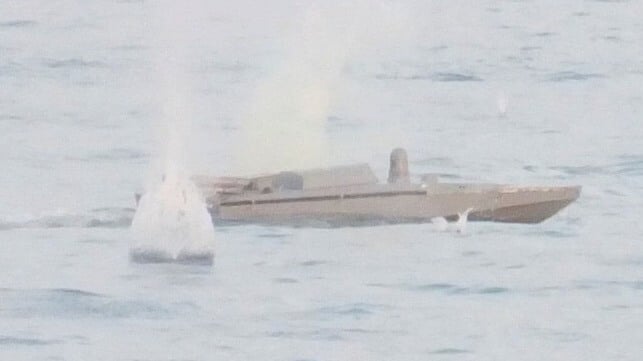Pentagon Wants "Thousands" of Fighting Drones Built in Just Two Years

The Pentagon is planning a major shift in order to counter China's massive investments in military hardware. As China goes big, the Pentagon wants to go small: Its newly-launched Replicator initiative envisions "multiple thousands" of smaller autonomous systems on land, in the air, on the surface and below the sea, all built cheaply enough to be lost in combat, all delivered by 2025.
On Monday, Deputy Secretary of Defense Kathleen Hicks outlined the challenge at a defense contractors' conference in Washington, D.C. China's advantage, she noted, is "mass - more ships, more missiles, more people." China has the world's largest standing army and the largest navy by vessel count, and it is modernizing its fleet at a rapid clip. It can hit naval targets from thousands of miles away using anti-ship ballistic missiles, which the United States does not possess.
The U.S. may not be able to make similar claims, but it does have access to the world's most advanced portfolio of R&D projects in unmanned and autonomous warfighting. The challenge, Hicks said, is getting these projects to scale up, and scale fast. She wants to see "thousands" of autonomous drone platforms in the hands of warfighters in just 18-24 months.
"Replicator will galvanize progress in the too-slow shift of US military innovation to leverage platforms that are small, smart, cheap, and many,” said Hicks. “So now is the time to take all-domain, attritable autonomy to the next level: to produce and deliver capabilities to warfighters at the volume and velocity required to deter aggression, to win if we’re forced to fight.”
The focus of the initiative will be to grow "a new state of the art" in less-expensive autonomous systems, creating "mass of our own" to counter China's military might, she said.
Hicks' vision reflects lessons learned from the front lines in Ukraine, where low-cost drones often determine the outcome of combat engagements. Drones spot targets for artillery, drop grenades on enemy positions, and directly target armored vehicles in high-speed suicide runs - all without endangering the drone operator. Properly deployed, an $800 drone with an antitank munition can destroy a million-dollar armored vehicle, and both sides have used these devices to inflict real costs on the battlefield.
On the water, Ukraine has developed a series of unmanned suicide boats with long range and high hitting power. These devices have yet to claim a sinking, but they have damaged at least two warships of the Black Sea Fleet, and have forced the Russian Navy to operate with greater caution. They are also radically less expensive than coastal defense missiles or manned naval vessels, and Ukraine claims to be building them in serial production.
Hicks noted that Russia's mass has not translated into an automatic win on the technological battlefield in Ukraine, and suggested that China should take heed of that lesson.
"We must ensure the PRC leadership wakes up every day, considers the risks of aggression and concludes, 'today is not the day' — and not just today, but every day, between now and 2027, 2035, 2049 and beyond," Hicks said.
The stakes couldn't be higher, according to the top U.S. officer in the Indo-Pacific.
"We ought to look at the Chinese to understand truly where they are and what they're doing: the largest military buildup since World War II, both in conventional forces and in strategic nuclear [forces]," said Adm. John C. Aquilino, commander of U.S. Indo-Pacific Command, speaking on the sidelines of the same conference. "They have focused very clearly on delivering a force capable to take on the United States."
No comments:
Post a Comment